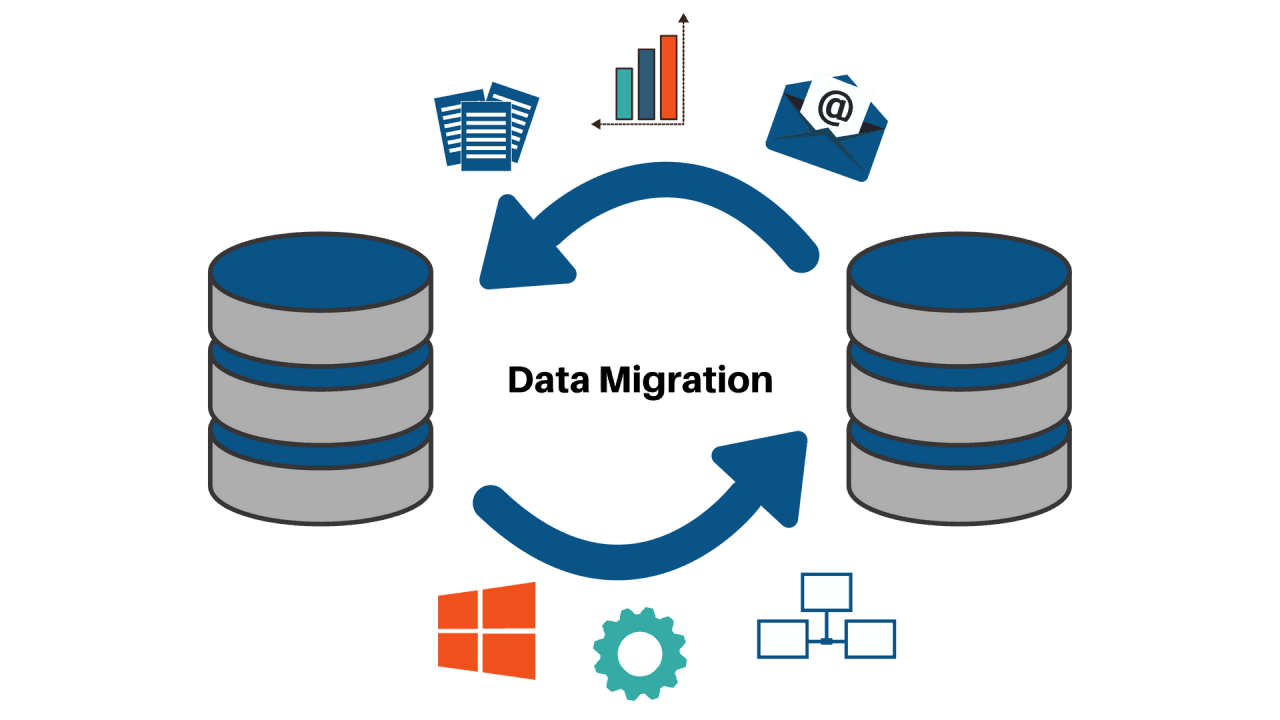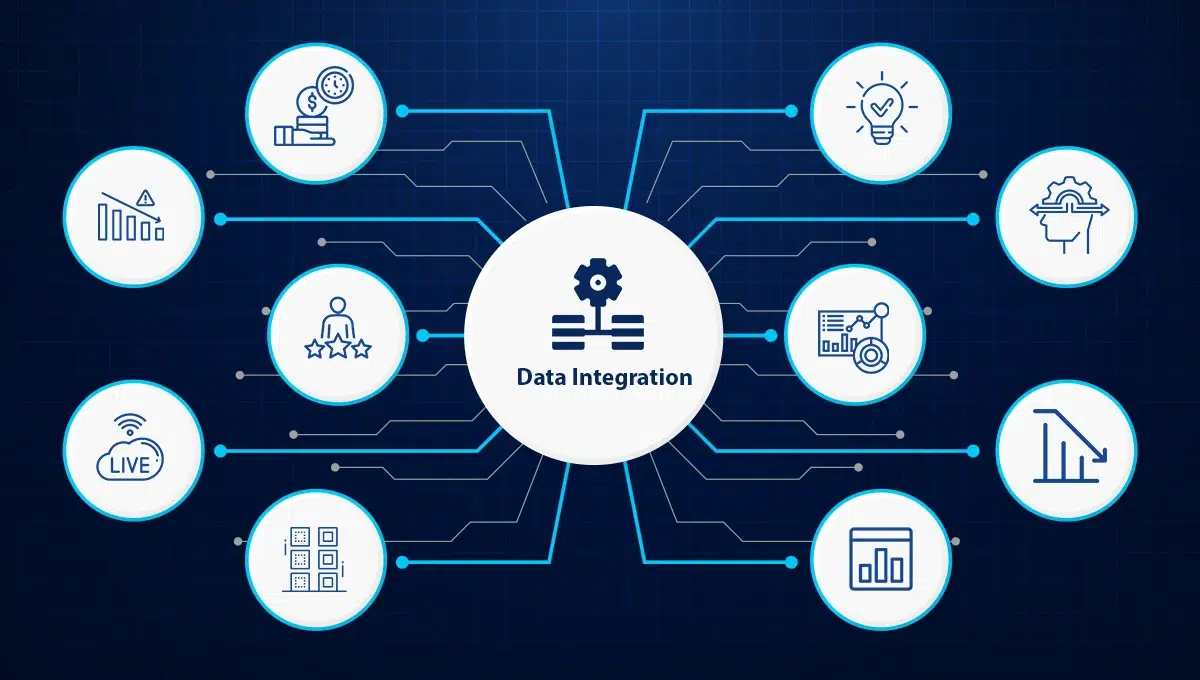Data migration and data integration are two common terms in the world of data management. What do they signify, and what sets them apart? More importantly, how can you choose the right approach for your business needs? In this article, we will compare data migration vs data integration, and provide some tips and best practices for each process.
Data Migration: What Is It and When Do You Need It?
Data migration is the process of moving data from one location, format, or system to another. The purpose of data migration is to transfer data to a new or improved environment, such as a new database, a new application, or a new cloud platform. Data migration is usually a one-time or occasional event, and it often involves changing the structure, format, or quality of the data.
Some common scenarios and use cases for data migration are:
- Merging or acquiring another company and consolidating their data
- Upgrading or replacing an existing system or application with a new one
- Moving data to a new or different cloud provider or platform
- Archiving or deleting old or obsolete data
Data migration can bring many benefits to your business, such as:
- Improving the performance, security, and reliability of your data
- Enhancing the functionality and usability of your system or application
- Reducing the cost and complexity of data management
- Complying with regulatory or industry standards
However, data migration also comes with some challenges, such as:
- Losing or corrupting data during the transfer
- Facing compatibility or interoperability issues between the source and the destination
- Experiencing downtime or disruption of your business operations
- Encountering unexpected errors or bugs in the new environment
To overcome these challenges, you need to follow some tips and best practices for data migration, such as:
- Planning and preparing your data migration project carefully and thoroughly
- Choosing the right data migration strategy and method for your needs
- Testing and validating your data before, during, and after the migration
- Monitoring and troubleshooting your data migration process and results
Data Integration: What Is It and When Do You Need It?
Data integration is the process of combining data from different sources, formats, or systems into a single, unified view. The purpose of data integration is to provide a consistent and comprehensive view of your data, such as a data warehouse, a data lake, or a data dashboard. Data integration is usually a continuous or regular process, and it often involves transforming, enriching, or cleansing the data.
Some common scenarios and use cases for data integration are:
- Analyzing data from multiple sources and systems to gain insights and make decisions
- Sharing data across different departments, teams, or partners to collaborate and communicate
- Reporting data to external stakeholders, such as customers, regulators, or investors
- Automating data workflows and processes to improve efficiency and productivity
Data integration can bring many benefits to your business, such as:
- Increasing the quality, accuracy, and completeness of your data
- Enhancing the visibility, accessibility, and usability of your data
- Enabling data-driven decision making and innovation
- Supporting data governance and compliance
However, data integration also comes with some challenges, such as:
- Dealing with data volume, variety, and velocity
- Facing data quality and consistency issues
- Managing data security and privacy risks
- Handling data complexity and diversity
To overcome these challenges, you need to follow some tips and best practices for data integration, such as:
- Defining and aligning your data integration goals and requirements
- Choosing the right data integration tools and techniques for your needs
- Implementing and enforcing data quality and security standards and policies
- Evaluating and optimizing your data integration performance and outcomes
Data Migration vs Data Integration: How to Choose the Right Approach for Your Needs
Data migration and data integration are both important and valuable processes for your data management. However, they are not the same, and they serve different purposes and needs. How can you choose the right approach for your situation? Here are some criteria to consider:
- Data volume and complexity: Data migration is more suitable for smaller and simpler data sets, while data integration is more suitable for larger and more complex data sets.
- Data quality and consistency: Data migration can improve the quality and consistency of your data by transforming and cleansing it, while data integration can ensure the quality and consistency of your data by enforcing and validating it.
- Data analysis and reporting: Data migration can enable data analysis and reporting by moving your data to a new or better environment, while data integration can enhance data analysis and reporting by combining your data from different sources and systems.
- Data security and compliance: Data migration can increase the security and compliance of your data by transferring it to a more secure and compliant environment, while data integration can maintain the security and compliance of your data by applying and monitoring it.
- Data scalability and flexibility: Data migration can improve the scalability and flexibility of your data by migrating it to a more scalable and flexible environment, while data integration can support the scalability and flexibility of your data by integrating it with different sources and systems.
Here are some examples and case studies of data migration and data integration projects:
- Data migration example: A company decided to migrate their data from an on-premise database to a cloud-based database to reduce the cost and complexity of data management, and to improve the performance and reliability of their data.
- Data integration example: A company decided to integrate their data from different applications and platforms into a data warehouse to provide a single and comprehensive view of their data, and to enable data analysis and reporting for their business intelligence.
- Data migration case study: A healthcare organization migrated their patient data from a legacy system to a new system to enhance the functionality and usability of their system, and to comply with the regulatory and industry standards.
- Data integration case study: A retail company integrated their data from different channels and sources into a data lake to gain a holistic and customer-centric view of their data, and to support data-driven decision making and innovation.
To choose the right approach for your needs, you need to follow some guidelines and recommendations, such as:
- Assess your current and future data needs and challenges
- Identify your data sources, systems, and destinations
- Define your data migration or data integration scope, strategy, and method
- Select your data migration or data integration tools and solutions
- Execute your data migration or data integration project and measure your results
Conclusion
Data migration and data integration are two essential processes for your data management. They can help you improve the quality, security, and value of your data, and enable you to leverage your data for your business goals and objectives. However, they are not the same, and they require different approaches and considerations. You need to understand the difference between data migration and data integration, and choose the right one for your needs.
If you need more information or assistance on data migration and data integration, you can contact us at OnextDigital. We are a leading provider of web development, mobile app development, UX/UI design, and white label software services. We can help you with your data migration and data integration projects, and provide you with the best solutions and results. Contact us now for further information.







